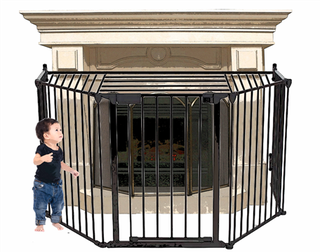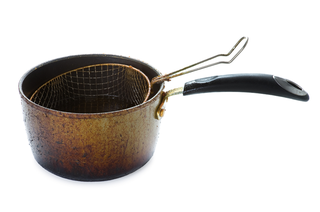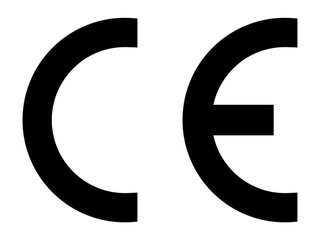Children are fascinated by fire. Teach them about fire risks.
Children do not understand danger, so supervise them at all times. Do not expect them to be able to look after themselves around fires.
Supervise children around fire hazards such as:
- candles
- stoves
- open fires
- heaters
- barbecues
- chip pans
- electrical equipment
Heating, cooking equipment and electrical items can go on fire. Your child could also suffer from burns.
Stoves, open fires and heaters
Always guard open fires with a spark-guard and a fireguard secured to the wall.
Cover stoves and heaters with a fireguard secured to the wall. Never put anything on top of a fireguard.
Keep portable heaters away from curtains and blinds as they could catch fire.

Carbon monoxide
Blocked chimneys and flues, faulty or damaged heaters can cause carbon monoxide (CO) poisoning.
Carbon monoxide gas can be released by any fuel that burns.
This includes:
- coal
- turf
- oil
- gas
- wood
It is colourless, odourless and can kill you. It is often called the silent killer.
To reduce the risks of carbon monoxide poisoning:
Do
-
get fuel-burning appliances serviced and chimneys cleaned every year
-
install at least 1 carbon monoxide alarm
-
make sure your family are aware of the dangers of CO poisoning
Don't
-
do not run a car, lawnmower, generator or other engine-powered equipment in any confined spaces
Chip pans
Chip pans are a fire risk. Consider a different method of cooking, such as an electrical deep fat fryer or oven.

Grills
Always clean your grill after use as fat and grease at the bottom of the grill can catch fire easily.
Barbecues
Keep children away from barbecues. Burn injuries can happen in seconds.
Candles and flames
Keep lit candles or anything with a flame out of children's reach. For example, an oil or fragrance burner or incense sticks.
Never leave burning candles unattended. Always supervise children in a room where candles are lit.
Keep candles away from curtains, blinds, fabrics and other items as they may catch fire.
Matches and cigarette lighters
Keep matches and cigarette lighters out of sight and reach of children.
Electrical equipment
Children can burn themselves on some electrical appliances and equipment. This includes hairdryers, straighteners and irons.
Switch off and plug out electrical equipment:
- when not in use
- when you're going out
- before you go to bed
This includes other electrical equipment such as:
- dishwashers
- washing machines
- dryers
- laptops, tablets and computers
- mobile phones
- electric scooters
Do not use damaged electrical appliances.
Important
Never leave hair-styling tools such as straighteners close to bedlinen or carpets while they are still warm or plugged in. This can result in a fire.
Charging electrical equipment
Do not leave items charging when you are not in the room, or when you go to bed. For example, mobile phones, electronic scooters or tablets.
These can overheat when being charged overnight, causing them to go on fire.
Never leave your mobile phone charging under your pillow. This is also a fire risk.
Do not leave charger leads plugged in to sockets when they are not in use.
Plug sockets
Do not put too many plugs into a socket. Electrical sockets can become overloaded and a fire can start. This happens when too many plugs are using the same socket, for example on an extension lead.
Switch off and plug out electrical items when going to bed and going out.
Flexes and cords
Use short flexes or cords on electrical equipment where possible.
This includes:
- kettles
- coffee makers
- slow cookers
- toasters
Short flexes and cords reduce the chances of your child being able to reach an electrical item and pull it down onto themselves. A long flex is also a strangulation risk.
Electric blankets
Do not use electric blankets for young children. They could mess around with the blanket, flex or plug. This may result in injury to themselves or a fire.
Do not use damaged electric blankets. Check electric blankets and their flexes regularly for signs of wear and tear.
Make sure there are no creases in the electric blanket and it lies flat on the mattress.
Plug out electric blankets when you go to bed.
CE safety mark
Certain types of products sold in the EU must comply with specific safety regulations and must have a CE mark.
These include:
- toys
- electrical, electronic and gas appliances
- personal protective equipment used by consumers - for example, bicycle helmets, sunglasses, swimming armbands
The CE mark looks like this:

Children's clothes
Try to buy children's clothing made of low-risk fire material.
Look out for 'Low flammability to I.S. 148' on labels. Clothes that do not meet this standard should have 'Keep away from fire' on the label. This will be written in capital letters and in red font.
Clothes safety for babies and children
If your child is wearing emollients
Emollients are oils, lotions and creams. They're usually used to treat dry skin conditions. They are very effective at this. But it is important to be aware of the fire risk linked with them.
If there is a build-up of emollient residue on clothing and bedding, this can quicken the speed of a fire.
Do not smoke near your baby or allow them near naked flames:
- while they are wearing emollient
- if they are wearing clothes or bandages that may have emollient on them
There is a fire risk with all paraffin-containing emollients.
There may also be a fire risk with paraffin-free emollients. There might also be a fire risk with other products that you put on skin over large body areas for more than a few days.
Washing clothing or fabric at a high temperature may reduce emollient build-up. But it might not totally remove it.
Remember, your baby’s treatment is important. Emollients are a very effective treatment for dry skin conditions. By making sure your baby is never around naked flames or lit cigarettes, you will keep them safe while they get their treatment.
Child safety checklist for parents including child-proofing (PDF, 5.1 MB, 2 pages)
Child safety wallchart for parents including basic first aid (PDF, 3.1 MB, 4 pages)